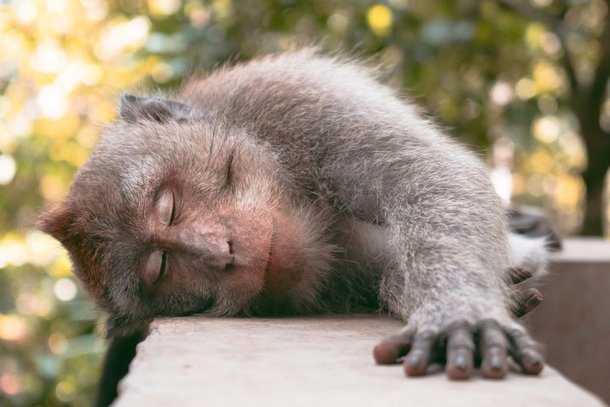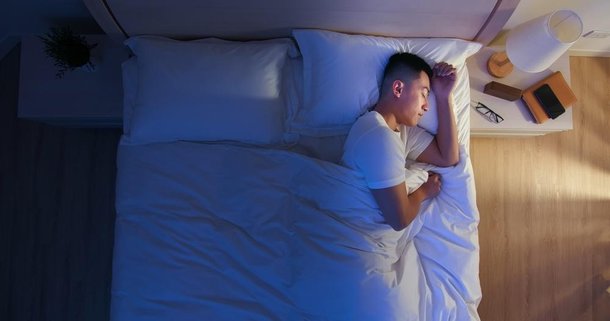Embora o sono seja algo bastante individualizado e a necessidade de descanso varie bastante de pessoa a pessoa, a Fundação Nacional do Sono dos Estados Unidos constatou que um ser humano adulto precisa dormir entre 7 e 9 horas por dia para estar completamente repousado para a jornada seguinte.
Inclusive, a privação do sono pode causar sintomas como irritabilidade, falta de foco e pode ser pior para um motorista do que dirigir embriagado. Porém, quando realizamos uma comparação com nossos parentes primatas, nossa quantidade de sono é consideravelmente menor do que as outras espécies. E qual o motivo por trás disso? Entenda o que diz a ciência.
Tempo de sono entre primatas
 (Fonte: Shutterstock)
(Fonte: Shutterstock)
Conforme levantado por pesquisadores da Universidade de Toronto Mississauga, o tempo de sono de outros primatas é consideravelmente maior do que o dos humanos. Os chimpanzés, por exemplo, dormem cerca de 9,5 horas em cada 24. Enquanto isso, os micos-cabeça-de-algodão chegam a 13 horas de sono diárias e os macacos-da-noite dormem até 17 horas.
Entretanto, é bem possível que essa discrepância tenha muito a ver com a nossa evolução como espécie. Até onde a ciência sabe, o sono é conhecido por ser importante para nossa memória, função imunológica e outros aspectos da saúde. Logo, o descanso ideal garante o funcionamento correto do corpo.
Modelos de sono de primatas baseados em fatores como massa corporal, tamanho do cérebro e dieta, no entanto, concluem que os humanos deveriam dormir as mesmas 9,5 horas diárias dos chimpanzés, mas isso não está acontecendo. O motivo por trás disso é porque amos menos tempo dormindo, mas períodos mais longos na fase do sono conhecida como movimento rápido dos olhos, ou REM — a fase do sono com sonhos mais vívidos.
Mudanças de ambiente
 (Fonte: Shutterstock)
(Fonte: Shutterstock)
Há milhões de anos, nossos ancestrais viviam e dormia em árvores — algo que ainda acontece em várias espécies de primatas. Nós, no entanto, saímos do topo das árvores para viver no chão e nele dormir. Isso significa abrir mão da proteção do sono arbóreo, que tornava mais difícil ser caçado por predadores noturnos.
Conforme apresentado pelo pesquisador David Samson na Revisão Anual de Antropologia de 2021, a falta de proteção pode ter sido chave nessa mudança de hábito dentro da nossa espécie — estudos mostram que mamíferos em maior risco tendem a dormir menos. De acordo com o pesquisador, é bem possível que os humanos tenham ado a cochilar em grupo para criar uma proteção coletiva no chão.
Logo, tudo vira uma questão de ambiente. Em cativeiro, animais que eram selvagens podem acabar dormindo menos tempo por conta do estresse ou aumentar a fase de sono pelo fator tédio. Atualmente, nosso tempo de sono muito tem a ver com a maneira em que construímos nossa sociedade e nossas rotinas.
Com isso, é possível imaginar que pessoas que sofrem com problemas no sono nos tempos modernos estão se sentindo muito estressadas ou simplesmente estão com seu ritmo circadiano fora de sintonia. Quando lutamos para dormir, demonstramos estar experimentando incompatibilidade entre como evoluímos e a maneira como vivemos.
Fonte: MegaCurioso.
